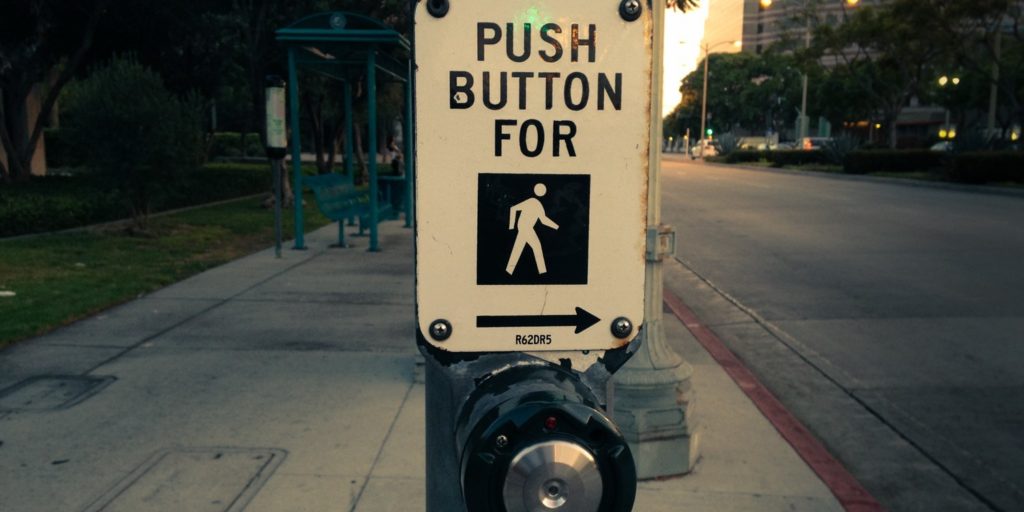We’ve probably all encountered this scenario: you arrive at an intersection on foot and see a green light for the direction you want to cross but the ‘do not go’ hand is up. Do you cross? It seems fine, but in the back of your mind is the worry that you are encountering some esoteric traffic setup that is going to result in you being stranded in the middle of the road in the best case scenario. Of course, in the worst case scenario you are risking getting t-boned by a car. It’s also actually illegal to cross as a pedestrian when you don’t have the signal (or if you start crossing during the countdown timer!)
Why is there this signalling mismatch between pedestrians and cars? The reason is ‘beg buttons’, where pedestrians need to hit the button to not only get the walk signal but to extend the amount of time available to cross to street to a reasonable length.
Why are beg buttons terrible?
- No one knows how they work! You can stand at any reasonably trafficked intersection and see how pedestrians treat these buttons. Some hit them, some don’t, and if you took an informal poll probably one of out ten people could tell you exactly what these buttons do. Additionally, most lights downtown don’t require using the button to get the walk signal but the majority of signals in the rest of city do, with no way to tell them apart.
- They are explicitly anti-pedestrian. If you miss hitting the button by any amount of time before the crossing window, the walk light will not come on. This causes a double-cycle wait for anyone trying to cross the street on foot. Combine this with the lack of consideration for pedestrian wait times in traffic plans and you can easily have several-minute delays trying to cross (see College Drive for an example)
- Add a lack of knowledge about how the buttons work, complicated traffic patterns and long delays in crossing time and you get very unsafe conditions. Five Corners on Broadway, one of the busiest pedestrian intersections in the city and one that is also adjacent to a K-8 school, resembles a game of Simon Says in terms of the complexity of crossing patterns.
Beg buttons probably have a place on streets with lower pedestrian traffic but for corridors with heavy pedestrian traffic (Broadway, Downtown, College Drive, etc..) they should be eliminated and pedestrians should be able to count on consistent crossing lights and times. Edmonton is already in the process of doing this, recommending in three separate reports for either the full elimination of beg lights or, at the least, their elimination on major shopping corridors.
Reducing the use of beg buttons is an easy and cheap fix to improve pedestrian safety and neighbourhood walkability that Saskatoon should look into doing in short order. Please contact your city councillor and let them know how you feel.
